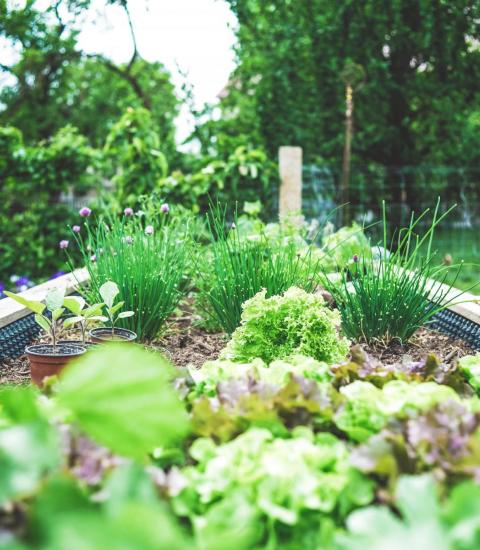
It begins at my childhood home. I grew up in a very busy Midwestern household, the oldest of four children with two transplanted Brooklyn, New York academics for parents. My parent’s prior experience with plants and gardening was nonexistent. Nonetheless, upon purchasing our home in Michigan, they tackled installing a backyard vegetable garden in our suburban home with great zeal, energy, and enthusiasm; determined to be farmers, something antithetical to their Brooklyn roots. My parents purchased an array of garden tools from the local garden store, a concept completely foreign to them, having never stepped foot in one before. They bought a wheelbarrow, for which I fondly remember my Dad encouraging us to jump into so he could give us rides in the yard, tipping and swaying the wheelbarrow while we shrieked with delight. As a family we dug up the grass along the fence line to make room for a backyard garden. While my parent’s interest in the garden rapidly waned, much to their surprise, their 6-year old daughter (me) took to the dirt with a passion. I quickly found that tending to the garden was a means to escape from three pesky younger siblings and find quiet and solitude amongst the veggies. It was my place in our home, a place where I felt most attached and connected and whole. The garden was where I wanted to be whenever I could, rain or shine. When it came time to harvest, I can still recall more than half a century later, a sense of sheer wonder and delight in what I, as a little 6-year old girl had nurtured all summer long. I can point to those early experiences in our vegetable garden as the catalyst for what would ultimately define my professional work and lifelong love of gardening and nature as a means to define home and place.
I began this piece by writing about my childhood memories about gardening at home, yet there is more to share about place and gardening together. Research finds that parents who actively involve their children in outdoor activities in supportive outdoor environments tend to have children who go on to become stewards of the land as they grow up; to feel a connection to nature and place, and arguably, to each other; to do and to be (Hosaka et al., 2018; Lohr & Pearson-Mims, 2005; McFarland et al., 2014). Our son was introduced to gardening as a toddler. David helped plant our first home garden and quickly became an expert in identifying herbs by sight and smell. I could send him outside with a little basket and a request for him to pinch off some parsley and thyme and know he would come back with them, proud as could be. David built bean tipis that he and his friends played in for hours and snacked on when they got hungry. He shared my unbridled joy when our first batch of compost was ready, telling us that it was like we were making the earth all over again. Many, many moves and three decades later, David still recalls with great fondness how our first home was his root and his place and helped him define his enduring love of nature. It is a love we share, a deep and lasting point of connection between us.
References
Hosaka, T., Numata, S. & Koun, S. (2018). Research Note: Relationship between childhood nature play and adulthood Participation in nature-based recreation among urban residents in Tokyo area. Landscape and Urban Planning, 180, 1-4. https://doi.org/10.1016/j.landurbplan.2018.08.002
Lohr, V.I. & Pearson-Mims, C.H. (2005). Children’s active and passive interactions with plants influence their attitudes towards trees and gardening as adults. HortTechnology, 15(3), 472-476.
https://doi.org/10.21273/HORTTECH.15.3.0472 McFarland, A.L., Zajicek, J.M. & Waliclek, T.M. (2014) The relationship between parental attitudes toward nature and the amount of time children spend in outdoor nature. Journal of Leisure Research, 46(5), 525-539. https://doi.org/10.1080/00222216.2014.1195
This article was adapted from https://thefield.asla.org/2019/12/03/natures-capacity-to-create-a-lifet…
